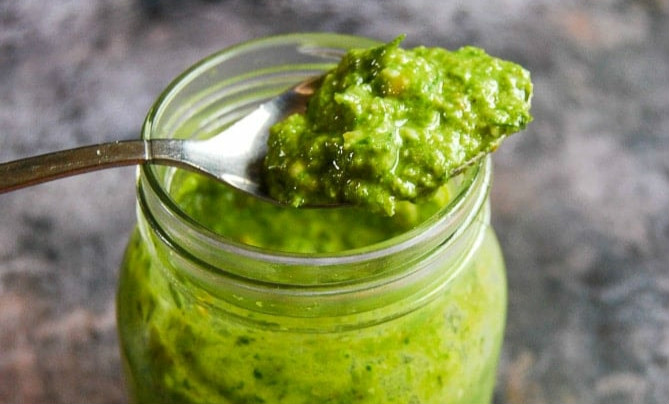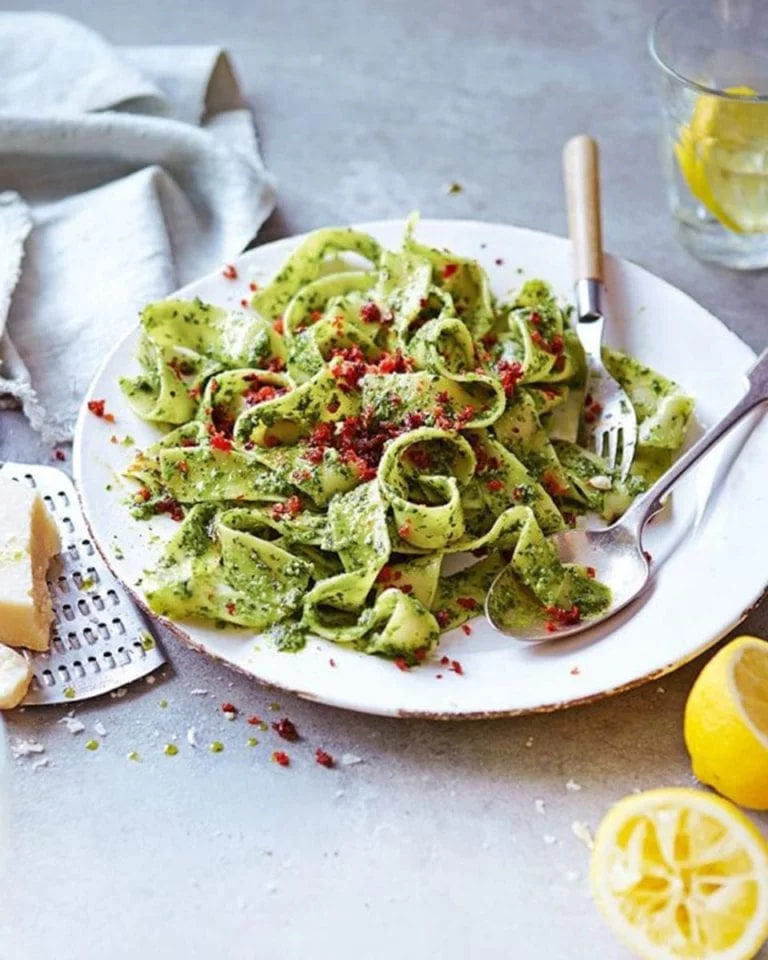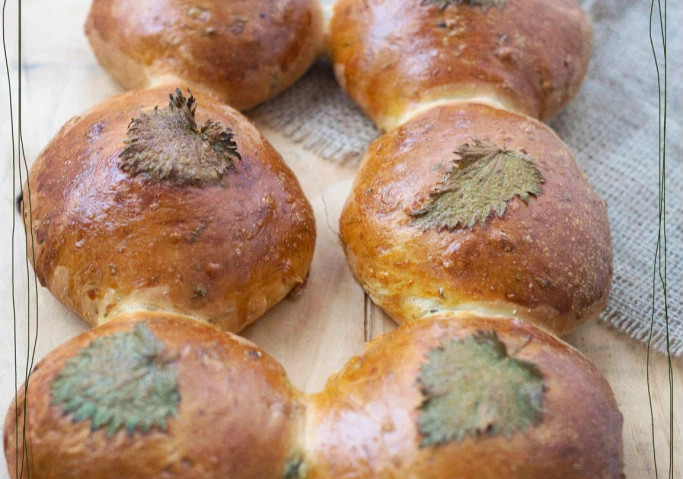Irish chef Jason Legear opened his Prague restaurant, Levain, in January 2019. Prior to the opening of that intimate Vršovice bistro with a 40-guest capacity, he owned The Little Whale restaurant in Malá Strana. Following the birth of his second child, Legear left the professional kitchen to help out at home. And that’s when he got interested in foraging.
“I’ve always enjoyed nature and grew up in the country,” he says. “I’ve got a background in science so it was a natural progression from science to food.”
One of the things Legear, who has cooked all over the world, from Asia to Australia and the American west coast, discovered he most appreciated about Czech culture was its mushrooming tradition.
“Czechs are a nation of foragers. I love mushroom season. Also zabijáka is one of the most fun things I’ve ever done, with a lot of help from the slivo,” he says.

While Levain is currently closed due to the coronavirus measures, Legear has kept busy posting recipes to the restaurant’s Facebook page that incorporate the natural bounty of Czech spring — and use greens and flowers that can be picked by anyone from the meadows and fields around Prague.
He says now is the perfect time to forage and not just because we all have extra time on our hands.
“It’s spring when most of the fun stuff starts sprouting,” says Legear. “Bear garlic is everywhere now. I live near Petřín and you can smell it before you can even see it. It’s a beautiful walk through the woods down to Malá Strana.” He adds that it’s also a great thing to do with kids and his own often accompany him on foraging excursions.

“I find chicken of the woods (a mushroom) on the side of a tree, sloes, which I use to flavor gin. Elderberry flowers are nearly ready for cordials and cocktails. Dandelions, nettles, stickybacks,” he says. For families and beginners Legear recommends the bookForaging with Kids by Adele Nozedar.
Recipes for chickweed focaccia bread and ramson and cow parsley chimichurri chicken wings can be found on his social media feed; we’ve included a selection in this article, below.
Many of the condiments pair well with Legear’s personal favorite easy quarantine dinner. “I always have a roast chicken in the oven, so versatile. Soup and sandwiches from the leftovers, you can’t go wrong.”
He hopes the Prague food industry will bounce back and in the meantime is working on tweaking his own restaurant’s concept. Legear suggests fans support Levain and other closed restaurants by, “Coming to eat, drink and be merry when we reopen. Share posts with your friends. Use us for private and birthday parties. Basically don’t be a stranger.”
Wild Garlic Pesto

Ingredients
- 100g wild garlic, cleaned and chopped
- 30g almonds (or nuts of choice)
- 20g pecorino
- Oil (enough oil to blend it together, I prefer vegetable oil as olive oil can be overpowering)
- Salt to taste
Simply bang everything into a food processor and slowly add the oil until desired consistency. Serve with pasta or risotto (or lovely on boiled potatoes), add a generous spoon just before serving to keep the color and flavor, great with a twist of lemon and a glass of Sauvignon blanc.
Stinging Nettles and Pine Needle Bread

Makes 6 large sandwich rolls
Chef’s note: Nettles lose their sting when blanched in hot water. They are highly nutritious and are a great alternative to spinach or chard. The juice can also be used as lemonade or tea. Here I decided to make some tasty sandwich rolls.
Ingredients
- 1 tsp easy bake yeast
- 500g white flour
- 1 tbsp honey
- 2 tbsp olive oil
- 1 tsp salt
- A big handful of scolded and chopped nettles
- A handful of pine needles
- 350ml lukewarm water
- 6 extra big nettle leaves for the top
- 1 egg
Start by harvesting your stinging nettles, with gloves on. Once home, pour a kettle of boiling water over the nettle and pine leaves to remove the sting, then drain. Keep the drained water for the bread. Select 6 big leaves for the top and set aside, then chop the remaining nettles, discarding the stems and the needles.
In a large bowl mix together the flour, salt and yeast. Then add the water, honey, and oil. Add the chopped nettles, mix well to form a soft dough. Turn out on a floured surface and knead for 10 min by hand until the dough is smooth and elastic. Drizzle a little olive oil into a bowl, pop the dough in, cover and leave to rise in a warm spot for 2 hours, or until doubled in size.
When risen, divide the dough into 6 balls and place on a greased baking tray. Cover with a tea-towel and leave to rise for an additional 45 min. Once risen brush with the beaten egg, place a nettle leaf on top of each roll, and brush with the egg again.
In a preheated oven at 220°C bake for 35 min, until golden. The rolls are ready when they sound hollow when tapped on the bottom.
Dandelion Honey

Chef’s note: Dandelion honey is a good substitute for honey, with a surprisingly similar flavor. The consistency is thinner than most honey and has a very similar appearance in color. If you have a lawn dotted with dandelions you can forage for the flowers. The tender greens are also good for salads. As spring has sprung but the bees aren’t yet buzzing enough to make honey, this is a fun seasonal substitute. Dandelion honey is great on toast, muffins, pancakes, and biscuits. You can use it much as you would use honey in tea and beverages.
Ingredients
- 4 cups dandelion petals
- 4 cups water
- 3 lemon slices
- 1/2 vanilla bean (split in half)
- 2 1/2 cups granulated sugar
Pick dandelion flowers during the daylight while in full bloom. Soak the flower in cold water for five minutes to allow time for any insects to exit. Remove the petals and discard the center of the flower and the stem. Place the petals in a heavy saucepan along with the water, lemon slices, and vanilla bean. Bring it to a boil, reduce the heat, and simmer it for 30 minutes. Remove the pan from the heat and let steep for 6 hours. Strain the dandelion tea through a cheesecloth and discard the solids. Place the dandelion tea in a heavy saucepan and bring it to a low boil. Gradually add sugar to the boiling liquid while stirring until the sugar is dissolved. Lower the heat and let it simmer uncovered until it reaches the desired syrupy thickness. This may take up to 4 hours.
See tips here for foraging in the Czech Republic in our article “Fresh Picked Prague”.












 Reading time: 5 minutes
Reading time: 5 minutes 


























